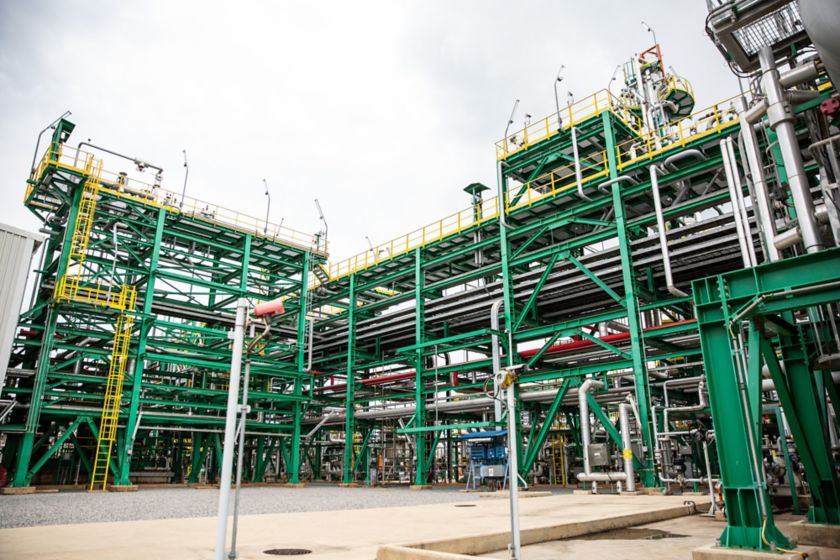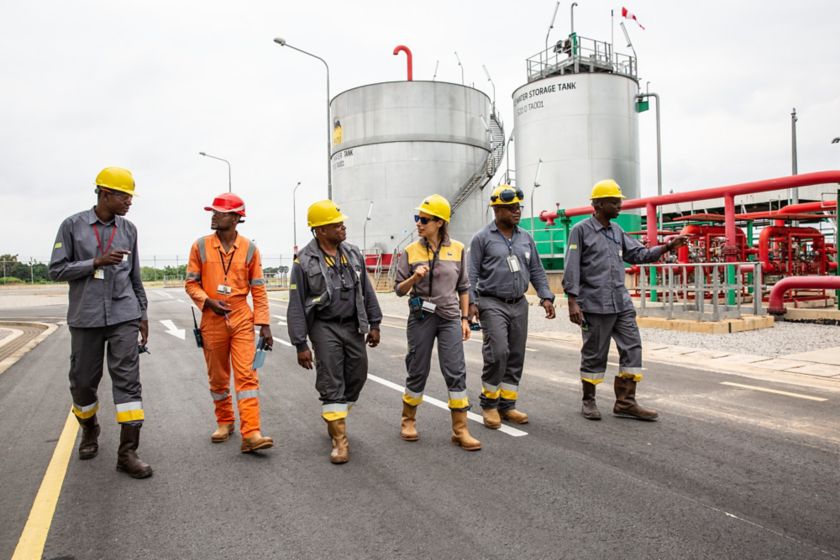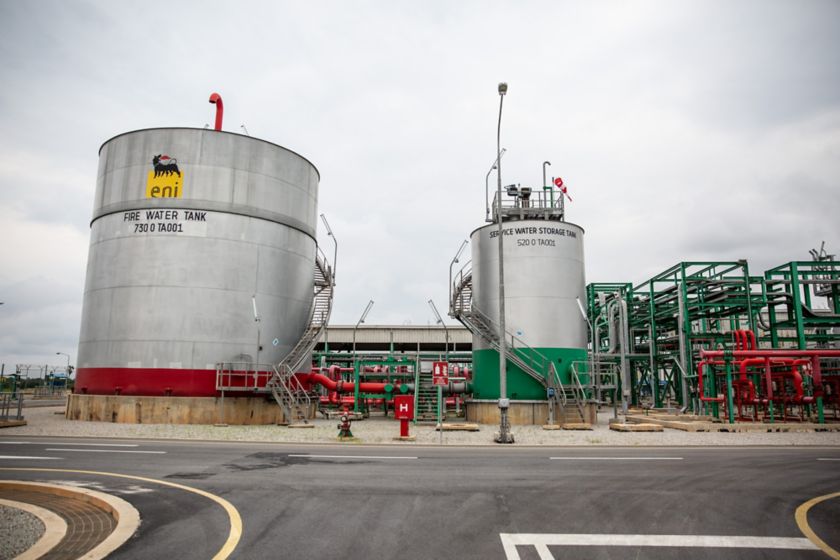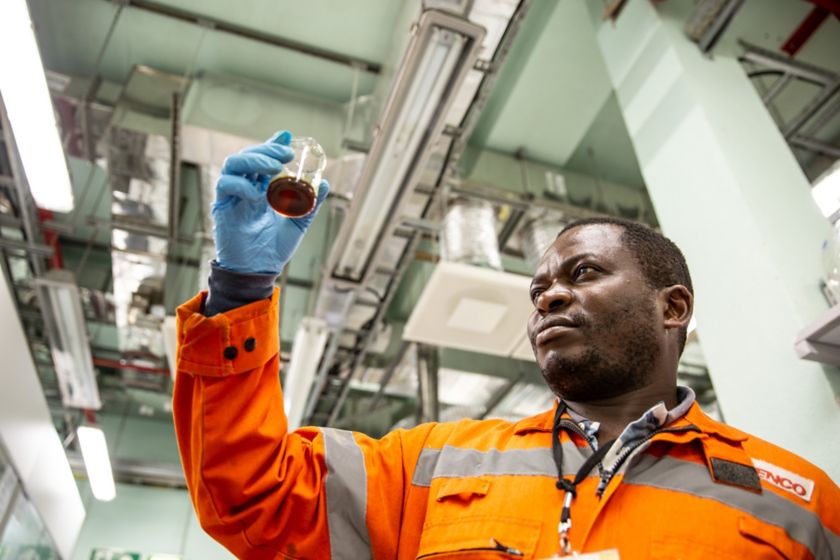Activity Type
Access to energy

Or , our new artificial intelligence tool.

The Integrated Project is a large-scale model we are developing in the Republic of the Congo to expand energy access for the population and create local and regional industrial development opportunities. With the natural gas produced from the Marine XII and M'Boundi fields, we supply the Centrale electrique de Djéno (CED) and the Centrale Electrique du Congo (CEC). As part of the same initiative, we contribute to upgrading the electric transmission infrastructure in the area and expanding the distribution network.
The Republic of Congo
2007 – present
Our integrated model for energy access
In cooperation with the Republic of the Congo and UNIDO, we have developed the Centre d'Excellence d'Oyo for Renewable Energy and Energy Efficiency. This centre aims to become a reference point for energy transition in Central Africa and promote applied research and skills development in the field of renewable energy, biomass and clean cooking solutions. The Oyo Centre thus contributes to strengthening the link between energy, water and food, which is fundamental for economic, environmental and social development. With the construction of two new power plants, we have made electricity distribution between Pointe-Noire and Brazzaville even more efficient and expanded public lighting through the installation of streetlights. The Congo Power Plant (CEC) now supplies about 70% of the country’s electricity generation. Our access-to-energy programme also underpins the Hinda Integrated Project, delivering electricity to various centers powered by solar panels. The use of solar power makes it possible to reach off-grid rural communities while curbing greenhouse-gas emissions.

Congo Onshore Plant

Workers in onshore plant

Congo Onshore Plant

Congo Onshore Plant
energy produced by CEC in the Republic of Congo
In collaboration with the Politecnico di Milano, we developed and tested a tool to assess the project’s direct and indirect effects on the quality of life of the local community.
Read the stories, case studies and testimonials behind our contribution to a socially equitable energy transition in the Sustainability Report.

A great part of the city was immersed in darkness... there wasn't drinking water in the village... But life changed.
20 October 2023

If you want to change topic, clear the chat and make a new query to receive more relevant results.
This will delete the question history.
If you want to change topic, clear the chat and make a new query to receive more relevant results. This will delete the question history.
Here you can find the full list of your queries.
The answers are generated by artificial intelligence, therefore they may contain inaccuracies. Please read the terms and conditions of use.

EnergIA is an innovative tool based on artificial intelligence capabilities, which can help you navigate the contents of eni.com, quickly finding answers to your questions. EnergIA can also perform a search on a specific topic, providing the most up-to-date data available, or it can invite you to delve deeper into a topic of your interest by suggesting links and specific readings. Start now!
EnergIA is an innovative tool based on artificial intelligence capabilities, which can help you navigate the contents of eni.com, quickly finding answers to your questions. Start now!
EnergIA (ener'dʒia) is a system based on Generative Artificial Intelligence.
Thanks to this technology, we can respond to your requests by querying the most relevant content and documents available on eni.com. (Note: financial documents from the last 12 months and press releases from the last 2 years are considered.)
Through EnergIA, you can delve into topics of interest and have a real-time window into the world of Eni.
If you wish to search for a specific document, press release or news, use the traditional search engine via the magnifying glass icon.
Like all systems that leverage Generative Artificial Intelligence, EnergIA may generate inaccurate or outdated responses. Always consult the sources that EnergIA proposes as the origin of the generated information.
If the system fails to find an exact match for the requested content, it still tends to provide a response.
If you find any inaccuracies in the provided response, please send us your feedback at the bottom of the page: it will be very helpful for us to improve.
Remember that the content generated by the system does not represent Eni’s official position. We therefore invite stakeholders to refer to their designated contacts for official statements: Press Office for journalists, Investor Relations for analysts and investors, Company Secretariat for shareholders etc..
EnergIA can understand questions posed in almost all languages, but we prefer to provide you with a response in English or Italian, the two languages available on eni.com. If you ask a question in Italian, the content on the site in Italian will be consulted. If you ask it in English or any other language, the content in English will be consulted. (Note: the language Eni uses for financial documents/content is predominantly English.)
If questions are formulated that violate the set security criteria, the system will not proceed with processing the response. Please remember not to send personal data.
By using this service, the users acknowledge that they have read and accepted the terms and conditions of use.
Search
EnergIA (ener'dʒia) is a system based on Generative Artificial Intelligence.
Thanks to this technology, we can respond to your requests by querying the most relevant content and documents available on eni.com. (Note: financial documents from the last 12 months and press releases from the last 2 years are considered.)
Through EnergIA, you can delve into topics of interest and have a real-time window into the world of Eni.
If you wish to search for a specific document, press release or news, use the traditional search engine via the magnifying glass icon.
Like all systems that leverage Generative Artificial Intelligence, EnergIA may generate inaccurate or outdated responses. Always consult the sources that EnergIA proposes as the origin of the generated information.
If the system fails to find an exact match for the requested content, it still tends to provide a response.
If you find any inaccuracies in the provided response, please send us your feedback at the bottom of the page: it will be very helpful for us to improve.
Remember that the content generated by the system does not represent Eni’s official position. We therefore invite stakeholders to refer to their designated contacts for official statements: Press Office for journalists, Investor Relations for analysts and investors, Company Secretariat for shareholders etc..
EnergIA can understand questions posed in almost all languages, but we prefer to provide you with a response in English or Italian, the two languages available on eni.com. If you ask a question in Italian, the content on the site in Italian will be consulted. If you ask it in English or any other language, the content in English will be consulted. (Note: the language Eni uses for financial documents/content is predominantly English.)
If questions are formulated that violate the set security criteria, the system will not proceed with processing the response. Please remember not to send personal data.
By using this service, the users acknowledge that they have read and accepted the terms and conditions of use.
A new window into Eni’s world, at your disposal. EnergIA is an innovative tool based on artificial intelligence capabilities, which can help you navigate the contents of eni.com, quickly finding answers to your questions.
